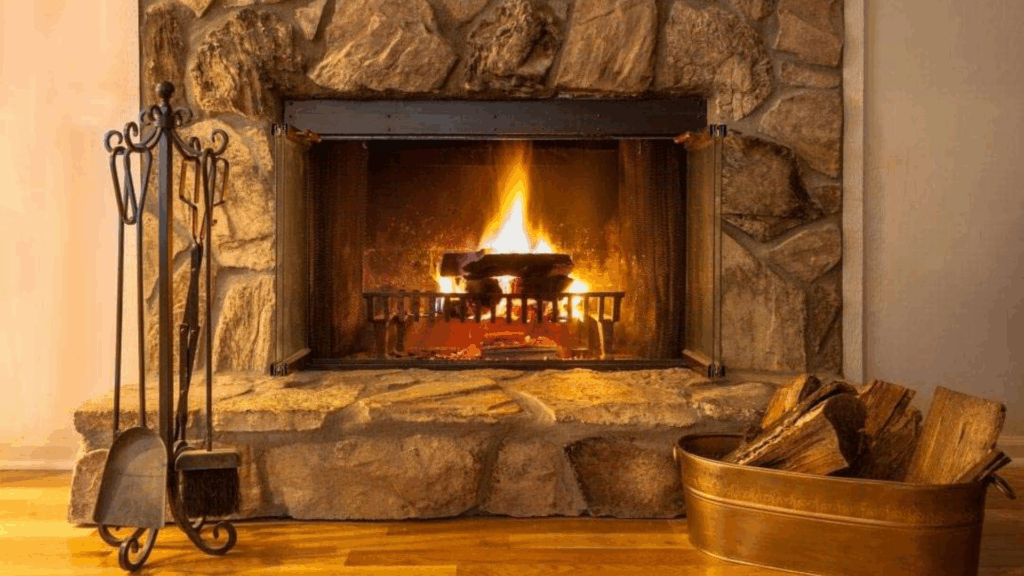Fireplaces have always been a central feature in many homes, offering both warmth and charm.
Over the years, I have come to realize how much these structures bring to a room, not just in terms of comfort, but also in aesthetic appeal.
The components that make up a fireplace play crucial roles in its overall functionality, safety, and appearance. By understanding each part, I’ve learned how they work together to create the perfect atmosphere while providing heat.
From the firebox to the chimney, the mantel to the hearth, each element is essential for both style and practicality.
In this blog, I will walk you through the various parts of a fireplace, their functions, and how they contribute to the design and operation of this timeless feature.
What Is a Fireplace?
A fireplace is a built-in structure designed to safely contain a fire while providing heat and adding a cozy atmosphere to a room.
Typically constructed from heat-resistant materials such as brick, stone, or metal, a fireplace serves both functional and decorative purposes.
In earlier times, fireplaces were essential for cooking and heating homes. Today, they are often used more for their aesthetic appeal and to create a warm, inviting ambiance.
Fireplaces can be wood-burning, gas-powered, or electric, depending on the design and needs of the household. Regardless of the type, the main goal of a fireplace is to offer a controlled and safe environment for a fire indoors.
Basic Structure of a Fireplace
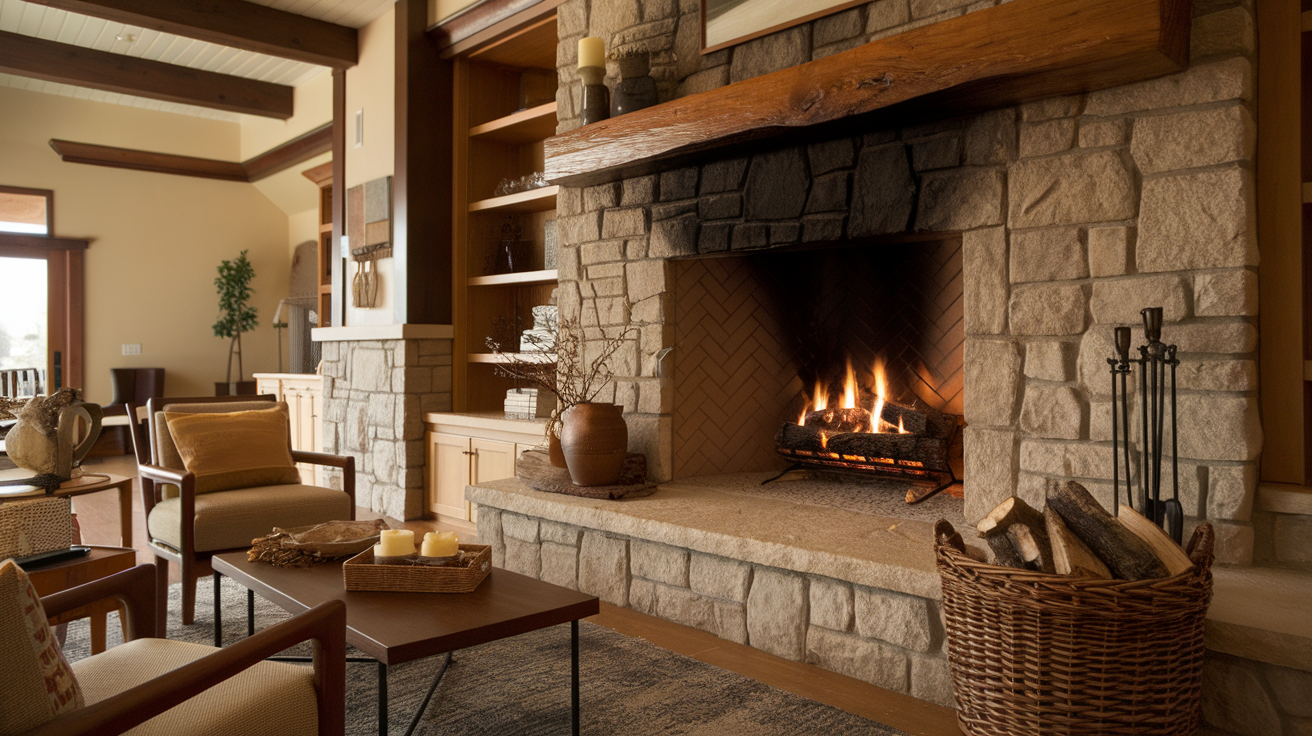
The basic structure of a fireplace includes several key components that work together to ensure safety, efficiency, and visual appeal.
These parts include the firebox, hearth, chimney, flue, damper, mantel, and surround. Each element has a specific function, from containing the fire to directing smoke out of the home and enhancing the overall design.
- Firebox: The inner chamber where the fire burns. It is built from heat-resistant materials like firebrick or steel.
- Hearth: The base or floor area in front of and beneath the firebox. It catches falling embers and protects the floor.
- Chimney: A vertical channel that directs smoke and gases out of the house safely.
- Flue: The passage inside the chimney that allows the smoke to escape.
- Damper: A metal plate that opens or closes the flue to control airflow and heat loss.
- Mantel: The shelf above the fireplace, often used decoratively and sometimes functionally to block rising heat.
- Grate: A metal frame that holds firewood above the floor of the firebox to improve air circulation.
- Ash Dump: A compartment beneath the firebox that collects ash for easy removal (not found in all fireplaces).
- Surround: The decorative area surrounding the firebox, often made of tile, brick, or stone.
Understanding the Different Parts of a Fireplace
Fireplaces are a central feature in many homes. They bring warmth and charm to any room, and understanding the different parts of a fireplace can help you appreciate how they work and how to take care of them.
1. The Firebox
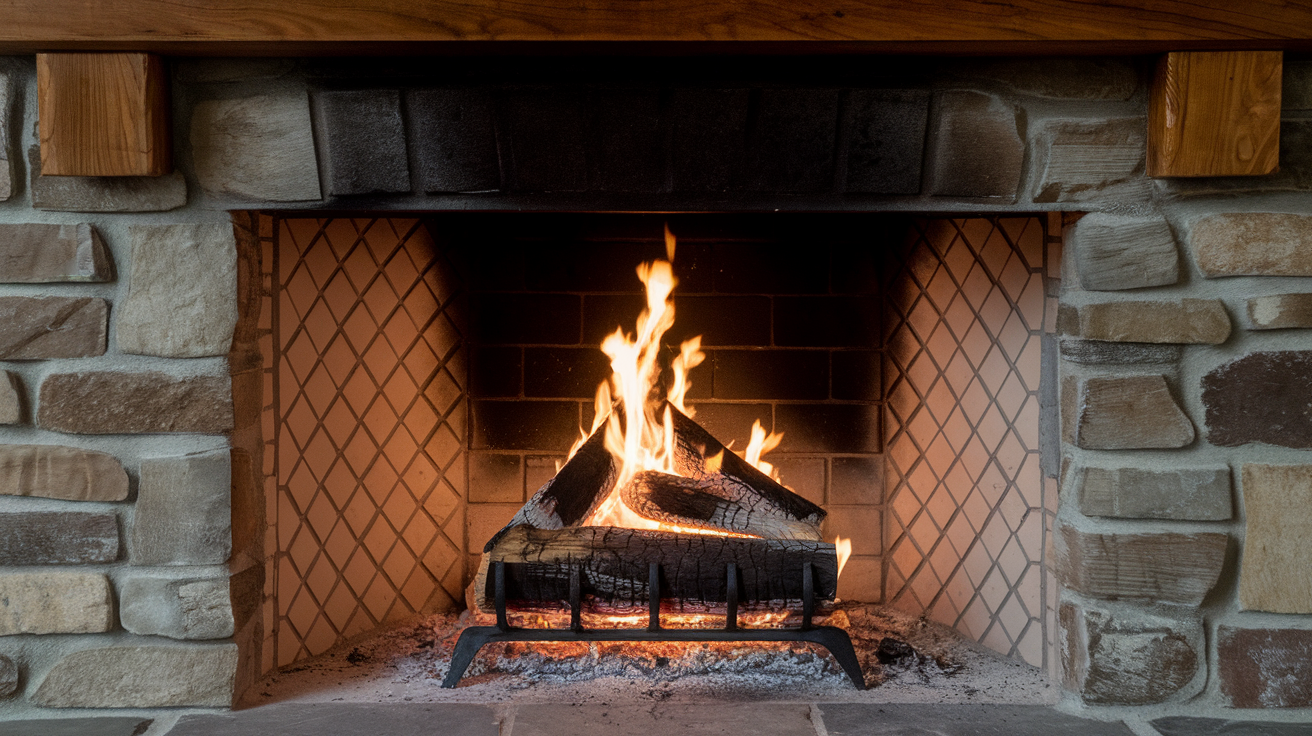
The firebox is the main area where the fire burns. It is designed to contain the flames, ash, and smoke while ensuring that the heat is safely distributed into the room.
Fireboxes are typically made of materials that can withstand high temperatures, like brick, stone, or fireproof tiles.
The firebox is often the first part of the fireplace to be noticed, as it is the central space where the flames are contained.
Function of the Firebox
- The firebox’s primary function is to hold the fire safely. It is built to keep the flames and heat confined, preventing them from damaging the rest of the home.
- The firebox prevents direct contact with combustible materials and directs heat out into the room while ensuring that any ash and soot remain contained.
- The walls of the firebox are often lined with heat-resistant materials, ensuring that the structure lasts longer despite constant exposure to high temperatures.
2. The Mantel
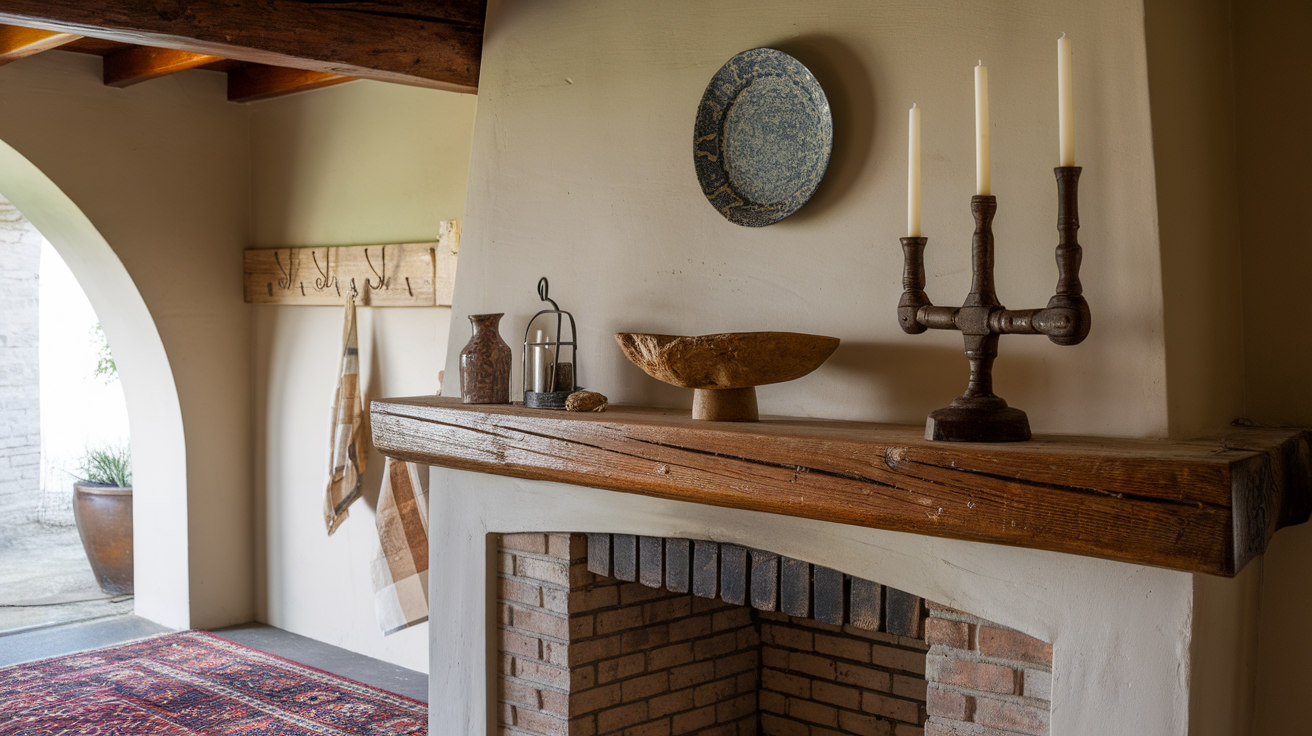
The mantel is the decorative shelf that sits above the firebox. It is one of the most recognizable parts of a fireplace, often used for displaying pictures, clocks, or other decorative items.
Mantels can be made from various materials, including wood, stone, or marble, and they come in different designs depending on the style of the home.
In many homes, the mantel is considered the focal point of the fireplace, bringing both elegance and personality to the space.
Function of the Mantel
- While the mantel adds aesthetic value, it also serves a functional purpose. It helps protect the surrounding area from heat damage, particularly on the walls and nearby furniture.
- The mantel provides a layer of insulation between the firebox and the wall, ensuring that the heat doesn’t cause excessive wear or damage.
- In some designs, the mantel can also help direct airflow within the room, creating a more balanced temperature and ensuring that heat is distributed more evenly throughout the space.
3. The Hearth
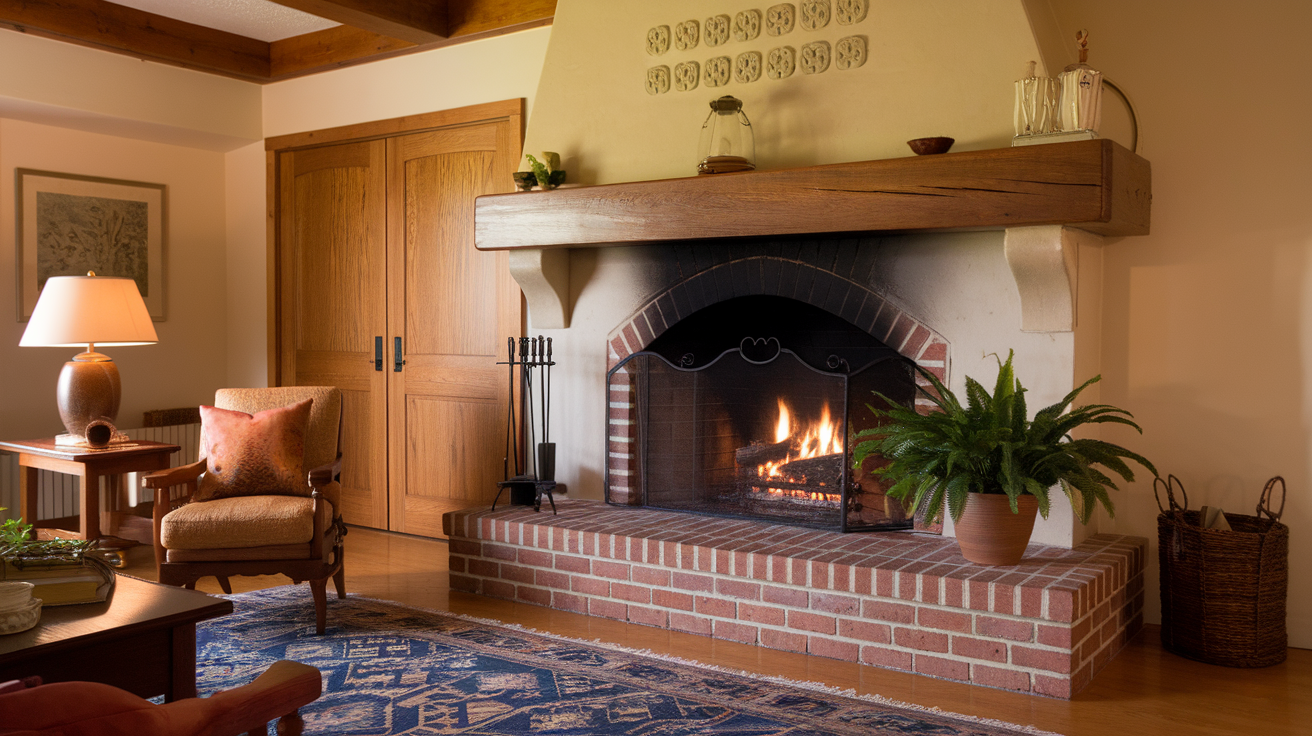
The hearth is the floor area in front of the firebox. It is often made of brick, stone, or tile, and its primary function is to catch falling ash, embers, or logs.
The hearth provides a safe, non-flammable surface for the fire to sit upon, preventing heat from damaging the floor beneath the fireplace.
In addition to its practical function, the hearth plays an important role in the overall design of the fireplace.
Function of the Hearth
- The hearth acts as a protective barrier, catching debris that may fall from the fire and preventing it from causing a fire hazard or damage to the surrounding floor.
- It is also an important feature in preventing sparks from jumping out of the firebox and causing damage to the surrounding area. In many homes, the hearth is also designed to enhance the fireplace’s appearance.
- Larger hearths may create a more dramatic look, while smaller ones can add a sense of coziness.
4. The Chimney

The chimney is a vertical structure that allows smoke and gases from the fire to exit the home.
It is a crucial part of the fireplace because it ensures that smoke doesn’t fill the room, making it unsafe and uncomfortable to be around the fire.
Chimneys can be built from brick, stone, or metal, depending on the design of the home and the type of fireplace.
Function of the Chimney
- The chimney directs smoke and gases safely outside, away from the living space. It plays a vital role in maintaining proper airflow, ensuring that the fire burns efficiently and that smoke is vented to the outside.
- Without a properly functioning chimney, smoke would have nowhere to go, causing the room to fill with toxic gases like carbon monoxide, which could pose serious health risks.
- A well-maintained chimney also helps the fireplace burn more cleanly by promoting a stronger draft that encourages better combustion.
5. The Damper
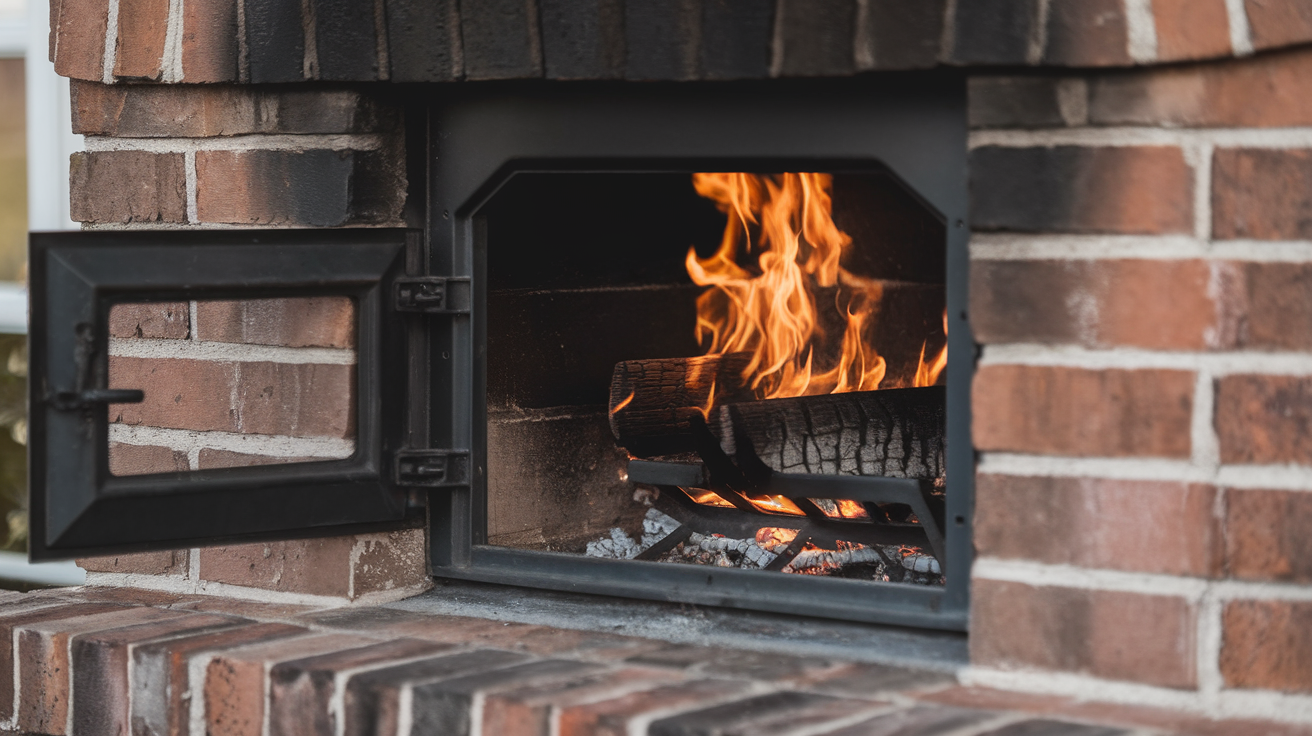
The damper is a movable component located at the top of the firebox, just below the chimney. It is used to control the airflow to the fire, allowing you to adjust the size of the flames or to completely close the fireplace when not in use.
The damper is typically made of metal and can be controlled by a lever or a handle, depending on the design of the fireplace.
Function of the Damper
- The damper plays a key role in regulating the fire. When the damper is open, air flows freely into the firebox, feeding the flames and helping them burn hotter and more efficiently.
- When the damper is closed, it prevents heat from escaping through the chimney, which is especially useful when the fireplace is not being used.
- By closing the damper, you can conserve heat in the home and keep warm air from escaping.
6. The Grate

The grate is a metal structure located inside the firebox. It is designed to hold the firewood off the floor of the firebox, allowing air to circulate around the logs and create a more efficient fire.
Grates can be made of steel, cast iron, or other durable metals and come in various designs depending on the style of the fireplace.
Function of the Grate
- The grate serves to elevate the logs, ensuring better airflow around the firewood, which results in a hotter, cleaner burn.
- By lifting the logs off the floor, the grate allows oxygen to reach all sides of the logs, which encourages more complete combustion and reduces the amount of smoke produced.
- It also helps to keep the firewood from sitting directly on the firebox floor, which would limit airflow and make it more difficult to maintain a healthy fire.
7. The Ash Dump

Not all fireplaces have an ash dump, but those that do have a small door or chute located at the bottom of the firebox. The ash dump is used for removing the ashes that build up from the fire.
It is typically connected to a storage area, either in the basement or outside the home, where the ash can be safely disposed of.
Function of the Ash Dump
- The ash dump allows homeowners to easily remove ash from the fireplace without having to reach into the firebox.
- Keeping the ash level low helps to maintain proper airflow, as too much ash can restrict the oxygen supply needed for the fire to burn efficiently.
- The ash dump is typically designed to ensure that the ash is directed into a separate compartment for easy disposal, preventing any mess or danger from accumulating in the firebox.
8. The Fireplace Surround
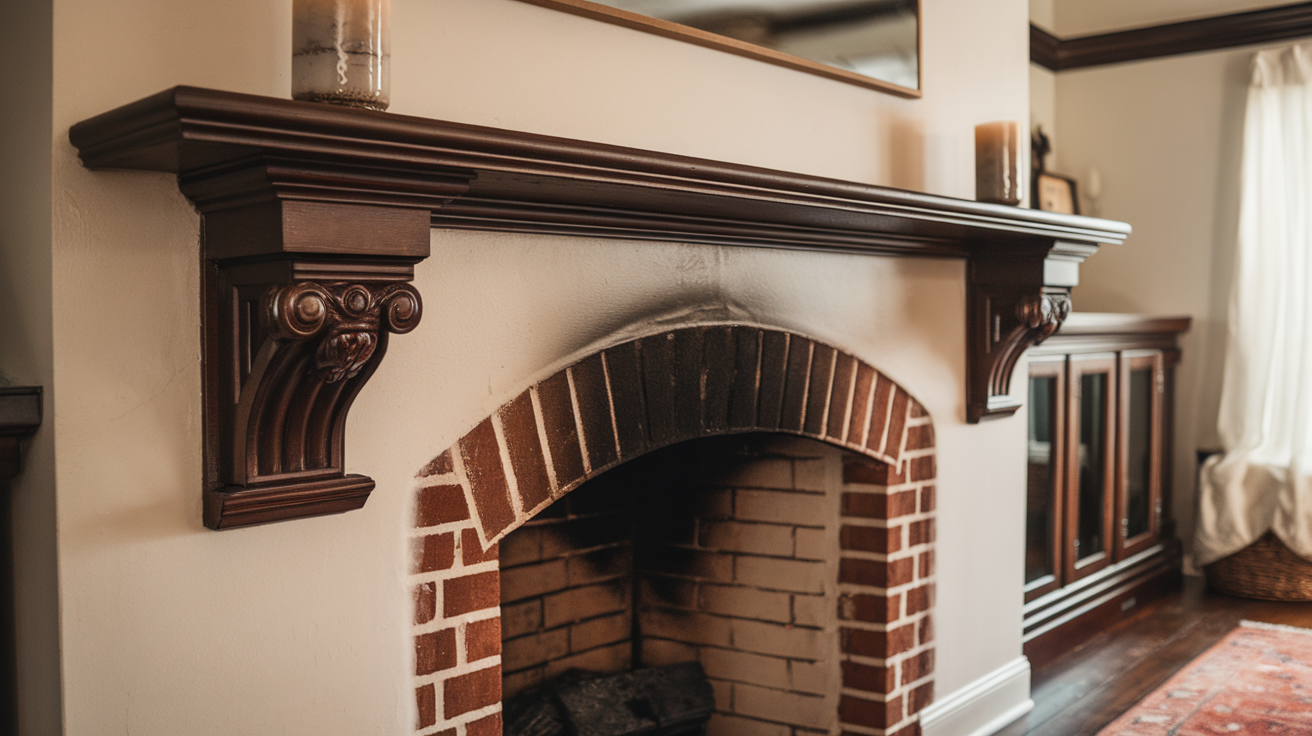
The fireplace surround is the area around the firebox that helps to frame and complete the look of the fireplace. It often includes the mantel and may also include additional decorative elements like trim, tiles, or stone.
The surround can be designed in many different ways to match the style and décor of the home.
Function of the Fireplace Surround
- The surround serves both a functional and decorative purpose. It helps to contain the firebox, keeping the heat and flames within a defined space, which ensures safety.
- The surround can also enhance the overall look of the fireplace, adding a stylish frame that complements the room’s design.
- It is also an important feature in ensuring that the heat from the fire does not escape and is instead directed into the room, increasing the efficiency of the fireplace.
9. The Log Lighter
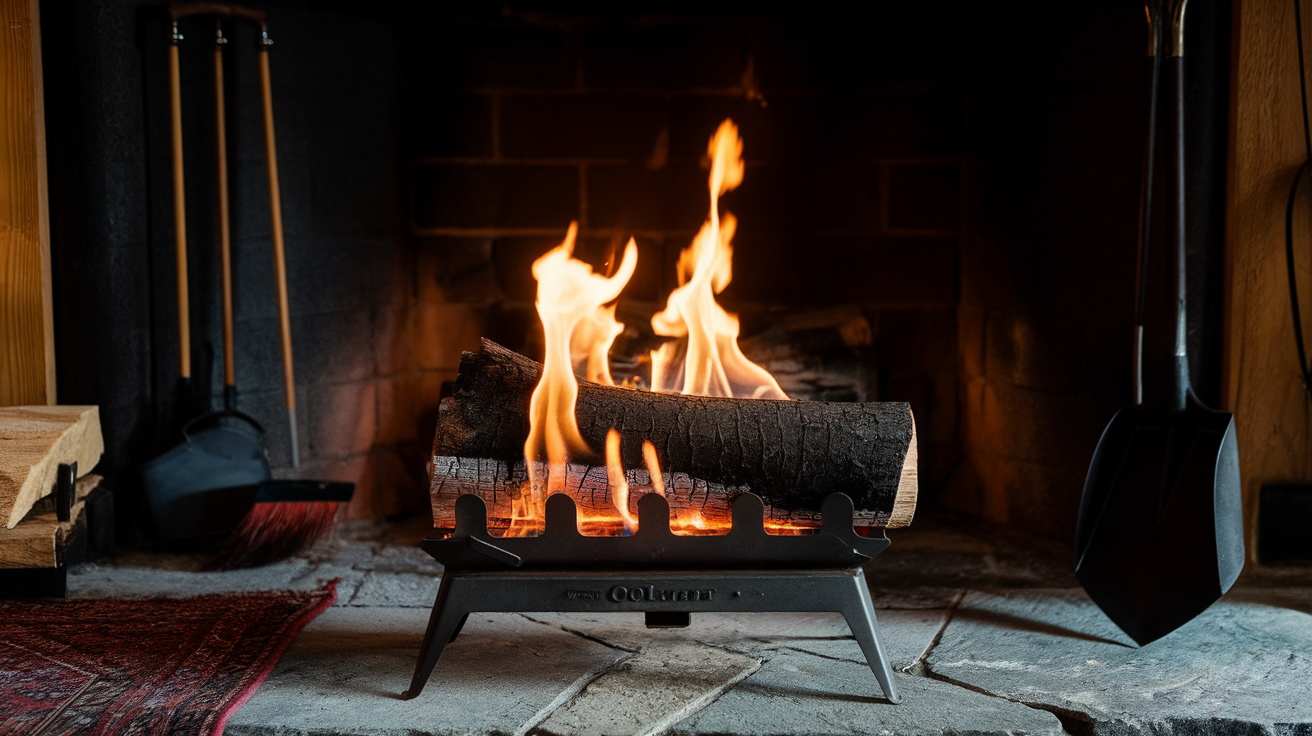
Some fireplaces are equipped with a log lighter, which is a gas-powered tool used to help ignite the logs.
The log lighter is typically placed beneath the grate and connected to the gas line. It makes starting a fire easier and more convenient, especially in cold climates.
Function of the Log Lighter
- The log lighter’s main function is to make lighting a fire easier. Instead of using matches or kindling, a log lighter can be turned on to quickly ignite the firewood.
- It provides a more consistent and reliable way to start a fire, ensuring that the logs catch fire more easily and evenly.
10. The Fireplace Tools

Fireplace tools are essential for maintaining and managing a fire. These tools include items like pokers, tongs, shovels, and brushes.
Fireplace tools are typically made of metal and are designed to help users safely handle the firewood, adjust the logs, and clean out the firebox.
Function of Fireplace Tools
- These tools allow homeowners to safely add logs to the fire, move the wood around, and clean out the firebox. Fireplace tools are designed to make it easier to control the fire and maintain the fireplace.
- They help ensure that the fire burns safely and effectively. Using fireplace tools, such as a poker to rearrange the logs or a shovel to clean up ash, helps prevent burns and damage to the fireplace.
Maintenance Tips for a Fireplace
Maintaining a fireplace is essential for safety, efficiency, and longevity. Regular upkeep ensures your fireplace works properly, providing warmth and comfort while minimizing potential risks.
- Clean the Chimney Regularly: Clean the chimney to remove soot and creosote buildup, which can be fire hazards. A professional chimney sweep should inspect it at least once a year.
- Check the Damper: Ensure the damper opens and closes smoothly. A stuck damper can cause improper airflow and poor fire performance.
- Inspect the Firebox: Check for cracks or damage in the firebox. Over time, heat can cause wear, and any damage should be repaired to avoid safety risks.
- Maintain the Hearth: Regularly clean the hearth to remove ash and debris. Also, inspect for any signs of wear or damage.
- Store Firewood Properly: Store firewood away from the fireplace in a dry, well-ventilated area. Moisture in the wood can cause excessive smoke and damage the fireplace.
- Use Fireplace Tools Safely: Always use fireplace tools, like pokers and tongs, to move logs or adjust the fire. Keeping them near the fireplace ensures safe access when needed.
- Check the Surround and Mantel: Inspect the fireplace surround and mantel for cracks or signs of heat damage. Repair them as needed to maintain both the appearance and safety of the fireplace.
- Install a Carbon Monoxide Detector: Always have a working carbon monoxide detector near your fireplace to detect any dangerous buildup of gases.
Conclusion
In conclusion, understanding the various parts of a fireplace and how they function is essential for both safety and comfort.
By maintaining each component, from the firebox to the chimney, I can ensure that my fireplace continues to operate efficiently and safely for years to come.
Regular cleaning, inspections, and proper firewood storage are all crucial steps in preserving the beauty and functionality of the fireplace.
Additionally, I’ve learned that with the right tools and knowledge, fireplace maintenance can be a straightforward and rewarding task.
Remember, a well-maintained fireplace not only adds warmth but also enhances the overall atmosphere of a room. Take action now, and enjoy the comfort of a safe, inviting fire all season long.

